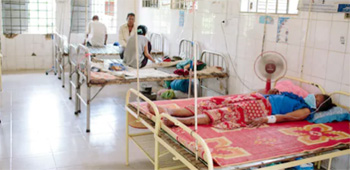
April 4, 2019
NEW DELHI: A rise in cases of superbugs has been linked to poor sanitary conditions
in health facilities which lead to the overuse and misuse of antibiotics.
One quarter of the world’s health centres lack clean water, a United Nations
report has found.
The World Health Organization (WHO) and UN Children’s Fund (UNICEF) said more
than 1 million deaths a year were associated with unclean births, and 15 percent
of all patients attending a health facility developed infections. Hospitals
are not necessarily points of care where you can heal, but points of infection.
What are superbugs: The overuse or misuse of antibiotics contributes to the
formation of superbugs. it is called CRE Bacteria Infection (Carbapenem-Resistant
Enterobacteriaceae). Carbapenem-resistant Enterobacteriaceae possess a unique
genetic makeup that allows the bacteria to make an enzyme that protects CRE
bacteria from a powerful antibiotic: carbapenem.
CRE are transmitted from person to person, usually by direct contact with contaminated
feces, skin, or instruments used in hospitals. Innstrumentation such as endoscopy
carries a risk of CRE if the instrument has not been properly sterilized.
Individuals who have received multiple antibiotics in the recent past, especially
if they had been hospitalized, are at increased risk for developing CRE.
Health care professionals who work in hospitals, especially intensive-care
units, or other areas such as nursing homes, that use many different antibiotics
have an increased risk of getting CRE infections or colonization.
The symptoms are cyanosis (skin turning bluish-gray), severe pneumonia, severe
urinary tract infection, high fever, life-threatening infection (sepsis) and
hypotension (low blood pressure).
Treatment of carbapenem-resistant Enterobacteriaceae infections is difficult.